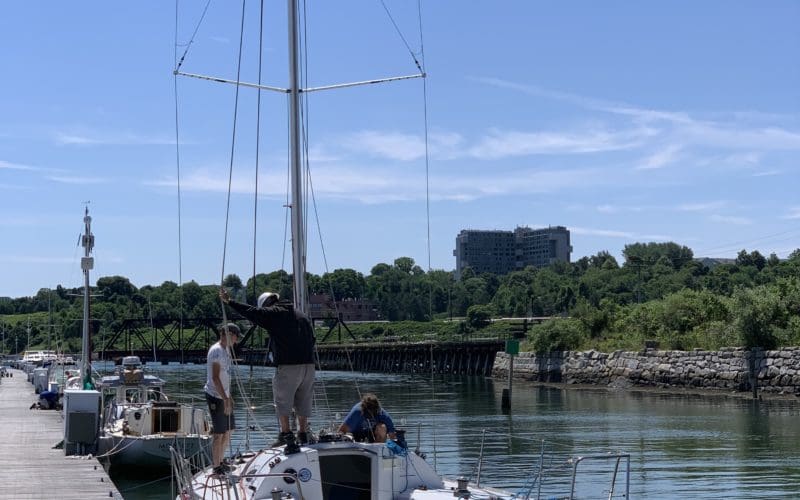In France, aspiring ocean sailors have a busy offshore racing scene that gives them a chance to learn offshore sailing skills. In the U.S., sail racing tends to concentrate on coastal, around the buoys type events and there are fewer options to get experience in modern race boats. Now two-time Vendee Globe ocean racer Rich Wilson and a group of top sailors have launched a program to improve the chances of aspiring American ocean racers.
Called the Collegiate Offshore Sailing Circuit (COSC), the concept was to purchase 33-foot Figaro 2 race boats and make them available college sailing teams. With these boats, college sailors will have the chance to get true offshore experience. The type of experience that can help launch them into the international ocean racing scene.
“I came back the Vendee Globe seeing less masts in my harbor,” said Wilson, president of COSC. “After seeing how much offshore sailing there was in France, we thought there was something we could do to spur offshore racing.”
Wilson and the others in the COSC group began talking to college coaches to get their thoughts on what was needed to spur the offshore element. The coaches reported that college sailing was largely dinghies competing in around the buoys events. Even the Naval Academy’s race series on the Navy 44 footers, the Kennedy and Macmillan Cups, involves around the buoys races.
“We wanted to see what we could do in the colleges in the academic semesters with the sailing teams to broaden their experience,” Wilson said. The program Wilson and the COSC group devised was to solicit funds from sailing organizations and individuals and then purchase Figaro 2 race boats in Europe. The Solitaire du Figaro singlehanded racing series is the premier event for sailors to move up in ocean racing. “The fundamental building block boat is the Figaro,” Wilson said. “The Vendee Globe comes out of that.”
The Figaro class boats, built by the French manufacturer Beneteau, is now on its third generation. Now that Figaro 3 boats are here, Figaro 2 boats are more reasonably priced for a group like COSC to purchase. “These are simple, bulletproof one-designs,” said Wilson, “with carbon masts, aluminum booms, seven-foot draft fixed keels and twin rudders.” And because the boats are 33 feet and not, for example, Open 60s, the loads on sheets and halyards are much less. This makes the Figaro 2 a more manageable and approachable boat for students who may only have experience sailing dinghies.
So far the COSC group has raised $900,000 from individuals and groups, such as the Storm Trysail Foundation, and has purchased nine boats — one each from the U.S., England, Slovenia; two from Sweden and four from France. These boats were shipped to Maine Yacht Center in Portland where experienced offshore race boat handlers Brian Harris and Rob Windsor reassembled the vessels and got them ready to sail. Eight college sailors got the opportunity to sail one of the boats this July and Wilson said the boat sailed superbly and the collegiate sailors greatly enjoyed the experience.
The colleges that will receive the boats have yet to be named. Wilson expects that information will be released soon.
Wilson says COSC is considering organizing one race in the fall and ne race in the spring, but that the main reason for the group is not to organize series of races but to promote seamanship and help sailors learn navigation, weather, safety, watchstanding, rules of the road, etc. “All the stuff you really need to go offshore.”
He stressed that the focus for the college sailors will be to get as much offshore experience as they can. “The whole deal with offshore is mileage.”
According to Wilson, the goal is to expand the COSC fleet. “We have to get the funding, but when we do we know where to get the boats.”

